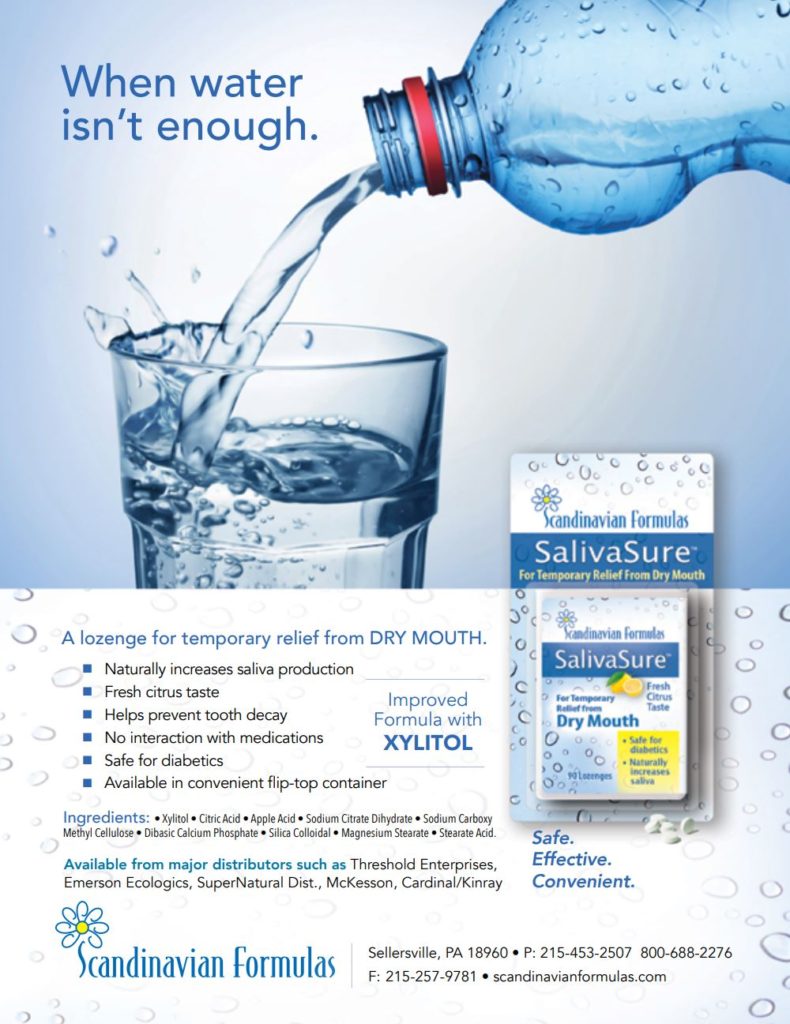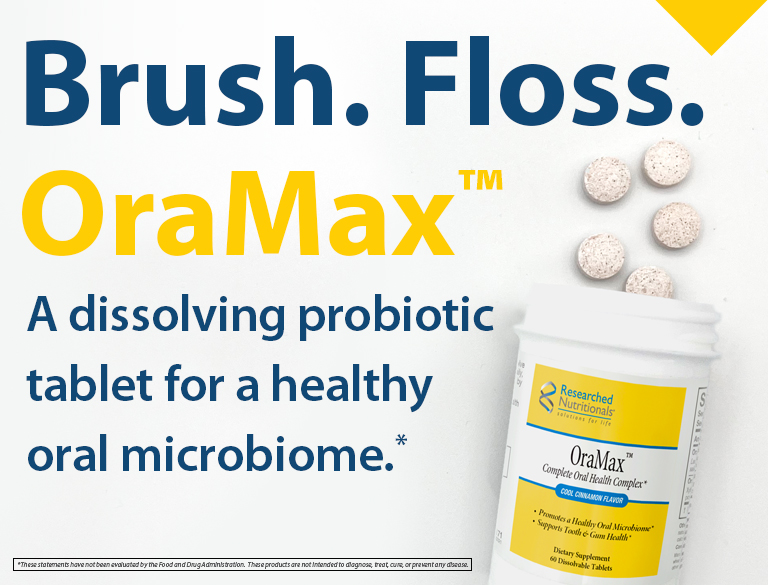By Jenna C. Henderson, ND
As a naturopathic doctor with a practice focusing on kidney health, I am often called upon by other holistic practitioners to collaborate with the renal issues of their patients’ care. The first question most practitioners have is “does the patient actually have a kidney issue?” There can often be a fine line between a healthy kidney and a kidney we need to be concerned about. Once we’ve identified that there is a problem, how can we support a compromised kidney?
Most people use the eGFR number to gauge the percentage of renal function, but it is good to know how this number is arrived at and why it does not apply to all patients equally. The eGFR is a derived number that comes from plugging four values into a formula. Those four values are creatinine, age, gender, and race. Most labs will automatically calculate eGFR with the metabolic panel, but if it is not listed one can go to the National Kidney Foundation page for kidney professionals to calculate a patient’s eGFR at https://www.kidney.org/professionals/KDOQI/gfr_calculator. This guide will also indicate if a referral to a nephrologist is warranted.
As age is part of the calculation of eGFR, the formula does not work well for the very young and the very old. Using this formula, a 70-year-old white male with an acceptable creatinine of 1.3, would have an eGFR of 55. While some loss of filtration is part of aging, this would not be a pathology. Traditional Chinese medicine would call it a loss of jing. Many elderly patients become needlessly panicked looking at their eGFR on a blood test, as it will always be low with the elderly. They might also become stressed when some labs use 1.0 at the high end of normal for creatinine, instead of 1.3. While they would benefit from a kidney-friendly diet and lifestyle, if the creatinine is under 1.3, it is within an acceptable range.
Even if the creatinine is elevated in the elderly, the first question I ask is how well hydrated were they at the time of the blood draw. As creatinine is measured per volume unit of blood, dehydration will cause the creatinine to be more concentrated in the urine.1 Proper hydration may be an ongoing struggle with older patients. Sometimes with a retest after good hydration we can shave off several tenths of a point off the serum creatinine.
After inquiring about hydration, the next question I ask is how is the blood pressure running. Filtration within the kidney takes place across a pressure gradient, just as the more one squeezes a sponge the better it cleans. The kidney’s natural tendency is that when the filtration is low, the blood pressure goes up. However, if the blood pressure is very low, whether due to over correction with medication, shock, or adrenal insufficiency, this can raise creatinine.2 In practice, a patient with a creatinine of 8.0 would seem to be headed straight for dialysis. However, this patient’s blood pressure was 90/60. Raising his blood pressure, the creatinine came down to 6.0. This is not a miracle by any means, but enough to delay dialysis several months.
Besides the elderly, very fit men may run a high creatinine. As creatinine is a breakdown product for muscle tissue, increased muscle mass will cause a higher baseline creatinine. Creatinine may be as high as 1.6 in a fit young man without indicating renal pathology. When in doubt, the blood test Cystatin C can be used as an alternative to creatinine. Cystatin C is not dependent on muscle mass like creatinine, and it can be used to calculate eGFR.3
Along with high creatinine, there are usually other indicators that may be off with progressed kidney disease. If one suspects kidney problems, there is usually a predictable pattern or some reason why the patient is not presenting typically. One should expect to see an elevation of BUN, as BUN and creatinine tend to track together. BUN comes from dietary protein, and it will be a direct indicator of how much protein the patient has recently ingested. As such it is more variable than creatinine. Dietary protein may go up and down, but muscle mass is relatively constant. A high BUN without any other indicator of kidney weakness is due to a high protein diet. A high creatinine with a low BUN is probably due to the patient going to an extreme cutting out protein in the diet. The BUN/creatinine ratio is often listed on the metabolic panel. Normal range is generally 10 to 20, and creatinine should track with BUN as it requires protein to maintain muscle mass. If the patient has a very high or a very low ratio, it’s good to find out why.
Along with a kidney-friendly diet, lifestyle, and continued care with nephrologists, supplements offer adjunct support to slow the progression of chronic kidney disease.
Besides high BUN, there may be renal anemia due to a lack of erythropoietin. This will show with a low hemoglobin, hematocrit, and RBC. However, this only happens with advanced kidney disease after the creatinine has started to rise. If anemia occurs before this, suspect another cause. It is worth noting that dehydration will cause an elevation of hemoglobin and hematocrit, so the renal anemia may not be initially apparent.4 It’s good to note if there is a high or low MCV or an elevated RDW, to see if the patient is in need of B12 or iron. It may also be useful to run an iron panel, particularly if the patient has cut out all animal protein.

Another indicator with advanced kidney disease is an elevation of potassium. While healthy kidneys expel potassium in the urine, a very weak kidney is not able to do this, and potassium will rise. This may not be the case however, if the patient is consuming foods of low nutritional value and just doesn’t have much potassium intake. Potassium sparing diuretics can also throw this number off. Surprisingly sodium usually stays in homeostasis as the body tightly regulates it. Sodium may even run low if there are adrenal or thyroid issues.
As the kidneys regulate the blood pH, expect to see indicators of renal acidosis. One should also expect to see a low CO2 level as the body becomes too acidic and the lungs try to compensate by expelling carbon dioxide. The kidneys maintain alkalinity of the blood by expelling metabolic acids in the urine. A urinary pH of 6.5 to 5.5 generally indicates that the kidneys are keeping up with this function. With advanced kidney disease, the kidneys are no longer maintaining the pH, and the urine will have a pH closer to 7.0. The patient is mostly passing water with the urine and acidic wastes are not being properly filtered out. (Extreme protein deprivation or extreme water intake may also cause a neutral urinary pH.5)
With kidney trouble, expect to see a high blood pressure or a highly variable blood pressure. When the whole mechanism of blood pressure control is damaged in advanced renal disease, hypertension can be difficult to manage. Frequent checking at different times and in different settings is useful to see a pattern. The patient who is very troubled with their health concerns may have sympathetic dominance and “white coat” hypertension. It’s helpful for the patient to have a self-inflating blood pressure monitor and keep their own log. (In practice, the units with a forearm cuff have appeared more reliable than those that attach at the wrist.)
Although these other indicators reinforce the seriousness of the patient’s condition, the primary indicator is creatinine. When creatinine does rise, it often catches patients by surprise. Patients often tend to attribute this rise to some condition in the recent past and expect a quick fix. But usually the conditions were building for years, if not decades before trouble was apparent.
Most young adults start out with approximately 1 million nephrons in each kidney. Starting as early as age 18, these filtering units break down as part of normal aging. People may lose as much as 1% of their total nephrons in a single year. Usually this is not a problem as we have reserves in our kidney. But if there is a disease process causing progressive damage to the kidneys, this loss is accelerated. In the initial stages this isn’t a problem. Some of the nephrons are lost, and the remaining functional nephrons just work harder to keep up with the demands of the body. This is a kidney in a state of hyperfiltration, with fewer and fewer nephrons working overtime.6 This state can go on for years, and normal creatinine is maintained. There’s no indication on the blood test that the kidneys are working hard to maintain filtration and keep up this creatinine.
Eventually the kidneys reach a point where they can’t work any harder and the creatinine goes up. This may happen incrementally with the creatinine inching up a tenth of a point at a time or it may be a sudden jump. Patients may be in denial about the seriousness of the condition. They may have experienced acute kidney stress or dehydration that elevated the creatinine and, once the situation was addressed, the creatinine returned to its normal baseline. Now, they expect that once this situation is addressed that the kidneys will once again return to normal.
Some patients fail to grasp the progressive nature of chronic kidney disease. FSGS, focal segmental glomerulosclerosis, is a particularly difficult degenerative condition of the kidneys. A patient with FSGS asked me to uncover the cause of her high creatinine. Why would a patient with the most deadly form of nephrotic syndrome be asking this? She had had FSGS for 10 years and to her thinking it was okay; the creatinine was always normal, and her life was unaffected. No one had explained that the kidneys were not all right, and for 10 years there was a gradual, insidious breakdown of kidney tissue.
Once there is a critical loss in the number of functional glomeruli, histopathological changes take place, and the kidneys become scarred as excessive demands are placed on them.7 Proteinuria is a hallmark of all types of nephrotic syndrome such as IgA nephropathy, FSGS, and lupus nephritis. But as the kidneys are damaged, even diabetic nephropathy and hypertensive damage will show some proteinuria as the kidney loses structural integrity.8 Cardiovascular stress will also start to become a long-term concern.
Besides chronic kidney disease, other conditions can put the kidneys in a state of hyperfiltration. Age-related kidney decline can happen in the absence of any pathology, with more nephrologists looking toward conservative care rather than dialysis for life extension.9 Morbid obesity can also put the kidneys into a chronically overworked state of hyperfiltration. Although more muscle mass produces more creatinine, all metabolically active tissue produces wastes that must be handled by the kidneys. Hyperfiltration can also be the result of congenitally small kidneys or a low birth weight.10 Another group facing hyperfiltration is kidney transplant donors. With a reduced number of glomeruli, supporting their single kidney becomes important.11
The kidneys’ ability to recover from damage is limited. Scar tissue does not revert to functional tissue. Some patients have high expectations, believing the kidneys have an unlimited capacity for regeneration. Nephrologists are often skeptical of alternatives in kidney care, especially once there’s been a critical loss of function. It’s good for patients to understand that while we can’t turn back the clock, we can optimize the function they do have and slow further damage.
A 2014 report from Stanford showed that kidneys are constantly remodeling in an adult and there is active cell division. This was a change from the previous idea that the kidneys were mostly static. This remodeling is likened to growth of a tree from the branches as each section of the kidney takes care of its own regrowth.12 However, if the damage to the kidney is extensive enough, it would be similar to a tree stump and regeneration to a fully functional kidney would not be feasible. This may change with stem cell research, but at present time we do our best to support kidney health and delay the need for dialysis.
There is a myriad of kidney supplements on the market, but unfortunately most do nothing to support kidney filtration. A problem in the supplement industry is that all kidney problems are grouped together whether it be urinary tract infections, kidney stones, or hypertension and very few address kidney filtration at all. Some of the natural supplements that support the kidneys are well-known, but not supplements commonly associated with renal health.
Actual human trials on natural supplements is lacking, but we can take evidence from animal models. One approach is the 5/6 nephrectomy model. The lab animal has 5/6 of their nephron mass removed (1 whole kidney and 2/3 of the other kidney), leaving them with 1/6 of the original kidney mass. This creates the conditions of hyperfiltration, similar to a kidney patient operating on a fraction of the original nephron mass. All of the lab animals undergo the 5/6 nephrectomy and half of them receive treatment and half of them don’t. Many natural substances tested with the 5/6 nephrectomy model show promise of supporting chronically overworked kidney and improving filtration. Along with a kidney-friendly diet, lifestyle, and continued care with their nephrologists, supplements offer adjunct support to slow the progression of chronic kidney disease.
Medicinal mushrooms have a long history of use for kidney ailments in Asia, with the cordyceps mushroom in particular proving useful. Cordyceps has been researched for use with IgA nephropathy, diabetic nephropathy, lupus nephritis, and post-transplant care. With the 5/6 nephrectomy model, cordyceps improved filtration, reducing serum creatinine and BUN. There was also less proteinuria, fibrosis, and sclerosis of the kidney tissue.13
Icariin, a constituent of the herb Epimedium sagittatum, was shown to significantly reduce creatinine, BUN, and uric acid in the 5/6 nephrectomy model. It also increased stem cells capable of repair.14 Commonly known as horny goat weed (HGW), this herb is often found in “male enhancement” formulas, and in those formulas may be mixed with herbs like yohimbe that could raise blood pressure. Traditional Chinese medicine attributes reproductive function to the kidneys, and indeed many kidney patients note low libido. Horny goat weed may help with low libido, and a study from China on men on dialysis noted significantly improved sexual function with HGW supplements.15
Resveratrol helped preserve renal function and attenuated sclerosis in the 5/6 nephrectomy model. The results were attributed to both increasing cellular energy with mitochondrial support16 and increasing nitric oxide.17 Cardiac support from resveratrol is an added benefit to the kidney patient. Supplements can be helpful, and the patient can incorporate dark grapes and berries into the diet, both of which are low potassium fruits.
Hibiscus is a natural ACE inhibitor. Prescription ACE inhibitors are used to reduce proteinuria and lower stress on the kidneys, as well as lower blood pressure; and hibiscus demonstrates these benefits as well. In the 5/6 nephrectomy model, hibiscus lowered creatinine and BUN. There was also less damage to the kidney tissue in the lab animal that received hibiscus.18
Rehmannia glutinosa has been used for renal support in TCM. It’s also part of formulas like Rehmannia 8 used for energy and a variety of health concerns. When Rehmannia was tested in the 5/6 nephrectomy model, there was a reduction in serum creatinine and proteinuria. The renal tissue showed fewer injuries as well, and Rehmannia slowed the progression toward renal failure.19
Salvia miltiorrhiza is typically characterized as an herb for cardiac support, but it’s also useful for kidney support. When studied in the 5/6 nephrectomy model, one active component of this herb, Tanshinone IIA, helped reduce serum creatinine and angiotensin II.20 Also known for its anxiolytic effect, Salvia miltiorrhiza may prove helpful for advanced kidney disease.
Another cardiac support supplement that may offer renal support is ubiquinol. In animal subjects with reduced renal mass under the conditions of salt loading, ubiquinol helped preserve renal function.21 Results were attributed to the antioxidant properties of ubiquinol, but supporting the electron transport chain may have also played a role. As many renal patients are elderly and/or on statins, ubiquinol supplementation is often a good choice.
The bioflavonoid rutin also improved creatinine in the 5/6 nephrectomy model. Similar to quercetin and found naturally in buckwheat, apple skins, figs, and rooibos tea, rutin may improve kidney filtration and help protect the kidneys from tubular damage and sclerosis.22 Rutin is often part of a bioflavonoid complex added to vitamin C but can be found by itself in capsules.
Adding to the long list of benefits of curcumin is supporting kidney filtration. The metabolite tetrahydrocurcumin, in particular, helps with renal fibrosis, hypertension, and proteinuria.23 Nephroprotection is attributed to both antioxidant status and mitochondrial support.24 Many kidney patients will also benefit from an improved lipid profile and blood sugar support.
As chronic insomnia is a huge struggle for many kidney patients, it is not surprising that melatonin makes this list of supplements that help filtration. It’s hard to overestimate how disruptive chronic insomnia can be for kidney patients. Many kidney patients report years or decades of insomnia prior to overt kidney symptoms, while others only experience insomnia late in the progression of kidney issues. In lab rats with reduced renal mass, melatonin ameliorates oxidative stress, inflammation, proteinuria, and progression of renal damage.25 It also helps nocturnal blood pressure, as uncontrolled hypertension can make sleep difficult.26
In conclusion creatinine and eGFR are the markers for kidney health, but there are some circumstances where these indicators are not reliable. Other indicators of kidney function such as BUN can also vary. Once kidney issues are identified, there are a variety of supplements that may offer support. The 5/6 nephrectomy model is commonly used to simulate the conditions of progressed renal disease and may be a first step to further research in this area. In practice, patients often respond to a combination of supplements for renal support. Sometimes there is a pronounced improvement in creatinine, but even just holding them at their current level is enough for most to keep the need for dialysis at bay.

Dr. Jenna Henderson’s practice, Holistic Kidney, is dedicated to the unique needs of renal patients. A kidney patient herself since 1993, she has experienced all stages of kidney disease firsthand. She is a graduate of the University of Bridgeport. Dr. Henderson has had several articles on kidney health published in Natural Medicine Journal, NDNR and the Townsend Letter. She has lectured extensively across the US to naturopathic doctors, kidney patients, and kidney professionals.
Dr. Henderson seeks to bridge the gap between mainstream nephrology and natural medicine. In her practice she helps patients sort through often conflicting information to understand what is appropriate for their individual needs and stage of kidney function. She is often able to help patients delay the need for dialysis. For those already in kidney failure, she helps patients find optimal wellness with dialysis or a transplant.
References
1. Raman M, et al. Estimating renal function in old people: an in-depth review. Int Urol Neprol. 2017 Nov;49(11):1979-1988.
2. Tsai W, et al. Association of Intensive Blood Pressure Control and Kidney Disease Progression in Nondiabetic Patients With Chronic Kidney Disease: A Systematic Review and Meta-analysis. JAMA Intern Med. 2017 Jun 1;177(6):792-799.
3. Baxmann A, et al. Influence of Muscle Mass and Physical Activity on Serum and Urinary Creatinine and Serum Cystatin C. Clin J Am Soc Nephrol. 2008 Mar; 3(2): 348–354.
4. Holsworth R, Cho Y, Weidman J. Effect of hydration on whole blood viscosity in firefighters. Altern Ther Health Med. 2013 Jul-Aug;19(4):44-9.
5. Goraya N, et al. Treatment of metabolic acidosis in patients with stage 3 chronic kidney disease with fruits and vegetables or oral bicarbonate reduces urine angiotensinogen and preserves glomerular filtration rate. Kidney Int. 2014 Nov;86(5):1031-8.
6. Denic A, et al. The Substantial Loss of Nephrons in Healthy Human Kidneys with Aging. J Am Soc Nephrol. 2017 Jan;28(1):313-320.
7. Fogo A. Mechanisms of progression of chronic kidney disease. Pediatr Nephrol. 2007 Dec;22(12):2011-22.
8. Coresh J, et al. Change in albuminuria and subsequent risk of end-stage kidney disease: an individual participant-level consortium meta-analysis of observational studies. Lancet Diabetes Endocrinol. 2019 Feb;7(2):115-127.
9. Rosansky S, et al. Treatment decisions for older adults with advanced chronic kidney disease. BMC Nephrol. 2017 Jun 19;18(1):200.
10. Tsuboi N, et al. The Renal Pathology of Obesity. Kidney Int Rep. 2017 Jan 23;2(2):251-260.
11. Srivastava T, et al. Hyperfiltration-mediated Injury in the Remaining Kidney of a Transplant Donor. Transplantation. 2018 Oct;102(10):1624-1635.
12. Vaughan C. Adult kidneys constantly grow, remodel themselves, study finds. June 19, 2014. https://med.stanford.edu/news/all-news/2014/06/adult-kidneys-constantly-grow.html
13. Zhang M, et al. [Effect of Cordyceps sinensis powder on renal oxidative stress and mitochondria functions in 5/6 nephrectomized rats]. Zhongguo Zhong Xi Yi Jie He Za Zhi. 2015 Apr;35(4):443-9.
14. Huang Z, et al. Icariin protects rats against 5/6 nephrectomy-induced chronic kidney failure by increasing the number of renal stem cells. BMC Complement Altern Med. 2015 Oct 21;15:378.
15. Liao H, Chen X, Li W. [Effect of Epimedium sagittatum on quality of life and cellular immunity in patients of hemodialysis maintenance]. Zhongguo Zhong Xi Yi Jie He Za Zhi. 1995 Apr;15(4):202-4.
16. Hui Y, et al. Resveratrol improves mitochondrial function in the remnant kidney from 5/6 nephrectomized rats. Acta Histochem. 2017 May;119(4):392-399.
17. Chander V, Chopra K. Possible role of nitric oxide in the protective effect of resveratrol in 5/6th nephrectomized rats. J Surg Res. 2006 Jun 15;133(2):129-35.
18. Seujange Y, et al. Hibiscus sabdariffa Linnaeus aqueous extracts attenuate the progression of renal injury in 5/6 nephrectomy rats. Ren Fail. 2013;35(1):118-25.
19. Lee B, et al. Rehmannia glutinosa ameliorates the progressive renal failure induced by 5/6 nephrectomy. J Ethnopharmacol. 2009 Feb 25;122(1):131-5.
20. Ahn Y, et al. Renoprotective effect of Tanshinone IIA, an active component of Salvia miltiorrhiza, on rats with chronic kidney disease. Phytother Res. 2010 Dec;24(12):1886-92.
21. Ishikawa A, et al. Renal preservation effect of ubiquinol, the reduced form of coenzyme Q10. Clin Exp Nephrol. 2011 Feb;15(1):30-3.
22. Han Y, et al. Rutin ameliorates renal fibrosis and proteinuria in 5/6-nephrectomized rats by anti-oxidation and inhibiting activation of TGFβ1-smad signaling. Int J Clin Exp Pathol. 2015 May 1;8(5):4725-34.
23. Lau W, et al. Dietary tetrahydrocurcumin reduces renal fibrosis and cardiac hypertrophy in 5/6 nephrectomized rats. Pharmacol Res Perspect. 2018 Feb 19;6(2):e00385.
24. Aparicio-Trejo O, et al. Curcumin prevents mitochondrial dynamics disturbances in early 5/6 nephrectomy: Relation to oxidative stress and mitochondrial bioenergetics. Biofactors. 2017 Mar;43(2):293-310.
25. Quiroz Y, et al. Melatonin ameliorates oxidative stress, inflammation, proteinuria, and progression of renal damage in rats with renal mass reduction. Am J Physiol Renal Physiol. 2008 Feb;294(2):F336-44.
26. Grossman E, Laudon M, Zisapel N. Effect of melatonin on nocturnal blood pressure: meta-analysis of randomized controlled trials. Vasc Health Risk Manag. 2011;7:577-84.











